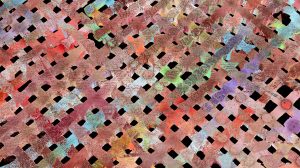How many data points do you need?
One of the most frequent questions we hear from customers is ‘How many points do your scanners collect?’ It seems there is a belief that more points = a better survey solution.
3D laser scanners produce an immense amount of data, some nearly a million points a second, and that sounds great! But do you really need that much data? And do you really want that much data?
Good coverage beats lots of points
Lots of points per second is fine, but unless you can easily move your scanner to a new setup, you’re not any better off.
I’ve always wanted AT LEAST two or three setup locations for every project, because adequate site coverage is necessary for accurate results. I would argue that in terms of volumetric accuracy, good coverage is more important than point-to-point repeatability or precision. After all, 10 million precise points can’t make up for missing data.

Points are like internet search results
A massive point cloud looks great, but after you’ve loaded the data, sat back, and thought ‘wow that’s cool’, then the work starts. You’ll only want those points that are relevant to your analysis, so you start cropping, filtering and deleting all the unnecessary ones. Those millions of points are the equivalent of internet searching. The first few results cover what you need, everything past the first page is ignored.
I find that most projects require the point cloud to be modelled into a surface or maybe contours. The data might be used for volumetric calculation or geotechnical analysis … the list goes on. All of these tasks require data manipulation of some kind. First, you will want to filter the data to ensure you are only using points on what you need, and to ensure the resulting model [or file?] is a usable size for sharing.
How well does a scanner help me do my job?
Laser scanners are incredible tools, but hardware that generates billions of points is not necessarily the best survey solution. Instead, you may want to consider how quickly the scanner allows you to capture data for your applications. Durability is also critical. Can a certain scanner endure your working environment? After all, you can’t control the weather! Is it fast and user friendly to operate? How well does your point cloud processing software handle tasks like registration, filtering and modelling? Because the scanner is only half the survey equation. So instead of being impressed by a massive number of points, look at the bigger picture and think about what will get you from field to finish faster, in the most accurate way. And yes I’m including coverage in that accuracy!



